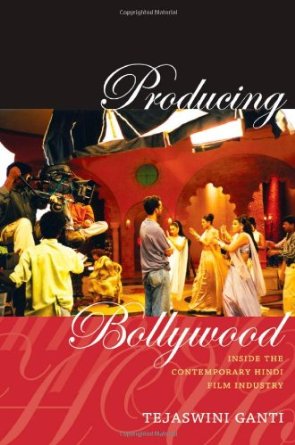FROM THE BORDER OF BODIES, TO THE HORIZON OF MEANING
There is always betrayal in a line of flight. Not trickery like that of an orderly man ordering his future, but betrayal like that of a simple man who no longer has any past or future. We betray the fixed powers which try to hold us back, the established powers of the earth. The movement of betrayal has been defined as a double turning-away: man turns his face away from God, who also turns his face away from man. It is in this double turning-away, in the divergence of faces, that the line of flight – that is, the deterritorialization of man – is traced. Betrayal is like theft, it is always double. Oedipus at Colonnus, with his long wanderings, has been taken as the prime example of a double turning-away…It is the story of Jonah: the prophet is recognizable by the fact that he takes the opposite path to that which is ordered by God and thereby realizes God’s commandment better than if he had obeyed. A traitor, he has taken misfortune upon himself. The Old Testament is constantly criss-crossed by these lines of flight, the line of separation between the earth and the waters. ‘Let the elements stop kissing, and turn their backs on one another. Let the merman turn away from his human wife and children . .. Cross the seas, cross the seas, urges the heart. Leave love and home.’ The ‘great discoveries’, the great expeditions, do not merely involve uncertainty as to what will be discovered, the conquest of the unknown, but the invention of a line of flight, and the power of treason: to be the only traitor, and traitor to all Aguirre, Wrath of God. Christopher Columbus, as Jacques Besse describes him in an extraordinary tale, including the woman-becoming of Columbus. The creative theft of the traitor, as against the plagiarisms of the trickster. G. Deleuze and C. Parnet, Dialogues II, 40-1.
We must define a special function, which is identical neither with health nor illness: the function of the Anomalous. The Anomalous is always at the frontier, on the border of a band or a multiplicity; it is part of the latter, but is already making it pass into another multiplicity, it makes it become, it traces a line-between. This is also the ‘outsider…” Moby Dick, or the Thing or Entity of Lovecraft, terror. G. Deleuze and C. Parnet, Dialogues II, 4
What would it take to produce a line of flight as pure experimentation in becoming, and one continuous untimeliness? The effervescently cynical amongst us would no doubt insist that it would first off take a lot of money, lots of time, and a certain high threshold for nonsense. If there is nothing I have learned from people such as Erik Empson, Arianna Bove, Matteo Mandarini, Valeria Gaziano, Liam Campling, Camile Barbagallo, Gerry Hanlon, Simon crab, Gini Simpson, and Stefano Harney it is that materialism begins with the betrayal of cynicism.
After displacing social constructivism
Act in thought, think through action.
And above all, it is objected that by releasing desire from lack and law, the only thing we have left to refer to is a State of nature, a desire which would be natural and spontaneous reality. We say quite the opposite: desire only exists when assembled or machined. You cannot grasp or conceive of a desire outside a determinate assemblage. on a plane which is not preexistent but which must itself be constructed. All that is important is that each group or individual should construct the plane of immanence on which they lead their life and carry on their business. Without these conditions you obviously do lack something, but you lack precisely the conditions which make a desire possible. Organizations of forms, formations of subjects (the other plane), ‘incapacitate’ desire: they subjugate it to law and introduce lack into it. If you tie someone up and say to him ‘Express yourself, friend ‘, the most he will be able to say is that he doesn’t want to be tied up. The only spontaneity in desire is doubtless of that kind: to not want to be oppressed, exploited, enslaved, subjugated. But no desire has ever been created with non-wishes. Not to want to be enslaved is a non-proposition. In retrospect every assemblage expresses and creates a desire by constructing the plane which makes it possible and, by making it possible, brings it about. Desire is not restricted to the privileged; neither is it restricted to the success of a revolution once it has occurred. It is in itself an immanent revolutionary process. It is constructivist, not at all spontaneist. Since every assemblage is collective, is itself a collective, it is indeed true that every desire is the affair of the people, or an affair of the masses, a molecular affair. G. Deleuze and C. Parnet, Dialogues II, 96
For Deleuze, the machine groups independent and heterogeneous terms, developing a topological proximity, which is itself independent of distance or continguity. A topological proximity could be across time/scales, perhaps the more complex resonances always are. To define a machine assemblage follow the shifting centre of gravity along gradients, tendencies, speeds, and abstract lines. An abstract diagram runs through it, seriously.
I am writing on day two of the jury deliberations after the trial of George Zimmerman, a neighborhood watch volunteer, in the politically charged murder case of Trayvon Martin. A white man racially profiled and shot dead an unarmed African American boy. There are race riots warnings all over the country. On CNN they are asking what’s going on in the deliberations of the jury. The system has transparency says the correspondence. Correspondent: Index of evidence, here is how it could have happened. We don’t know if it was a fight, the defence said that it was a fight. Zimmerman got punched, we know that much.
Martin, who lived in Miami, was walking back to the house of his father’s fiancée at the Retreat at Twin Lakes gated community carrying a soft drink and sweets he had bought at a local convenience store. Zimmerman, who worked as a mortgage underwriter, said he spotted the hoodie-wearing youth as he was on his way to buy groceries, then called police to report a “suspicious male”. Somehow, the two ended up in a fight.
Zimmerman was released without charge on the night of the shooting. After a campaign by Trayvon Martin’s parents prompted nationwide protests, Florida’s governor, Rick Scott, appointed a special prosecutor to re-examine the circumstances of the case. Zimmerman was arrested in April last year, 44 days after the shooting. The case hinged on the conflicting testimony of witnesses and the key issue of whose screams were heard on a recording of a 911 call made by one of Zimmerman’s neighbours, which also captured the fatal shot. Martin’s mother, father and brother all testified that they were certain it was the teenager who was pleading for his life. Zimmerman’s parents and a numbers of friends and neighbours took the stand to insist that it was Zimmerman. The earlier call, made to a non-emergency police line by Zimmerman, caught the defendant using profanities that were repeated by the prosecution to try to show he acted with spite, ill-will and hatred, the benchmarks for a second-degree murder conviction. “Fucking punks. These assholes, they always get away,” assistant state attorney John Guy said as he began his opening argument on the first day of the trial. “Those were the words in that grown man’s mouth as he followed in the dark a 17-year-old boy that he didn’t know.” He concluded by telling the jury: “George Zimmerman did not shoot Trayvon Martin because he had to. He shot him for the worst of all reasons, because he wanted to.”
What was the role of race in the murder? The media returns to 1991, and Rodney King, revolving the present into the past of upheavals, as if the populations were trapped in a tragedy/farce dialectic. We of course remember Mark Duggin as well (how can we not after Fahim Alam’s provocative film, Riots Reframed—and I affirm once more, as I did to Fahim the critique of power that is and affirms a revolutionary practice is one that functions in the complexities of topological proximities, not in the arbitrary sign that is identity—we need a practice that while speaking directly to the lived conditions, experiences of value, and algorithmic life of capital can, through that practice, affirm with Gabriel Tarde that to exist is to differ, and in that seize the resources for the untimeliness of revolutionary becoming. “Total madness is losing all identity. Nijinsky constantly asks himself whether he has really gone mad, he makes it the stakes of a wager. The subject who wonders whether it is mad can neither be classed as mad or rational. Such writing goes on to act as gauge in a topology of the mind that cna no longer be localized from that point on” (Kuniichi Uno, The Genesis of an Unknown Body (27).
Back to Emmet Till, and further still. But media spins it positively, rationally, peacefully. But there has always been a race war in Amerikkka, and it is classed and gendered as well, but those are not all the same wars. The movement of movements—their quite specific and yet universal revolutionary becoming—runs, through them, as throwing up new abstract diagrams of an intensive pragmatism that is both transcendental and empirical. “Everything I have written has been vitalistic, at least I hope it has,” said Deleuze. I want a practice that can do more than nod agreement.
Many writers and activists have been attending to this problem of the movement of movements and its relation to revolutionary becoming (not, we should note as a program for a successful revolution, but as a necessary decolonization of the embodied mind). We merely add some observations in the aims of creating diagrams of morphogenesis in radical politics.
[Commnet: To move thought toward the diagrammatic, through experimental diagrams of topologies changing form and expression. Deleuze/Parnet:
But the essential point, in the end, is the way in which all these regimes of signs move along a line of gradient, variable with each author, tracing out a plane of consistence or composition which characterizes a given work or group of works: not a plane in the mind, but an immanent real plane, which was not preexistent, and which blends all the lines, the intersection of all the regimes (diagrammatic component): Virginia Woolf’s Wave, Lovecraft’s Hypersphere, Proust’s Spider’s Web, Kleist’s Programme, Kafka’s K-function, the Rhizosphere … it is here that there is no longer any fixed distinction between content and expression. We no longer know if it is a flux of words or of alcohol, we are so drunk on pure water, but equally because we are talking so much with ‘materials which are more immediate, more fluid, more burning than words’. G. Deleuze and C. Parnet, Dialogues II, 122
What is the abstract diagram that runs through race lived as an affirmation of the body’s capacities in intensive ecologies of sensation (blocs of sensations, durations of mood, patterns of rhythms, a network of assemblages) and the actuality of race as white supremacy (with its own blocs of sensations, social relations, durations of mood, patterns of rhythms, war machines)?
One of the fundamental capacities of the body is to exit. The exit is important in an age after psychoanalsysis. But how to resist spatializing the exit? Follow the movements of the exit. This movement of bodies, their trajectories, tendencies, capacities, resonances, rhythms, and speeds—singularly populational, collectively assembling/enunciating. To leave the scene, which is what Martin was aiming to do. This is one of the capacities of the body that racism has always sought to control, ‘watch,’ modulate, turn into a sad passion, saturate with resentment: To begin again somewhere else, again in the middle, to continue the body’s experiment of the universal implication and the universal explication—this has been the tragedy of joy in Western ethics, politics, philosophy. Hegel accused Spinoza of a certain oriental derivation (not genetically, but genealogically, in his conceptual filiations, as Heidegger might have said), and Deleuze asked what if the West had a grain of Zen added to its mixture. At this stage, it is difficult to say where Zen as a basic philosophy of art-in-life has not affected, let us not forget its ideological resonance with wofe—the collapse of work and life—cf Tim Edkins. But as a practice, Zen is the overthrow of capitalist control of value. (I should mention that I have just begun to read the work of Uno Kuniichi, but I feel already in proximity with his conceptual filiation).
From Andrew McFeaters via Facebook: A couple of thoughts in anticipation of a verdict on Zimmerman: Police are prepared to establish First Amendment Zones so that impassioned protestors can freely express themselves behind fences. Ahhhh, what? Secondly, the media have already foregrounded that any collective actions by people will be viewed as riotous. Language matters: riots, protests, and marches are different categories. By calling something a riot, you are denying the legitimacy of the political actions and expressions of the assembled people.
The jury found Zimmerman not guilty of all charges.
If today we return to the question of race in radical democratic politics, we draw practical, historical, and theoretical topologies of virtual-actual revolutionary becomings. This is not a happy phrase. It is not meant to roll off your tongue, its not meant to be aspirated, but tasted quite literally.
I have been experimenting with Scotch Bonnett peppers. Two peppers, whole cumin, garlic, onion, tomato, brown sugar, and your favorite vinegar, ‘materials which are more immediate, more fluid, more burning than words’ (recipe thanks to Saskia Fischer). The sensation lingers on your tongue while dissolving your tastebuds. Its good, you should try it.








